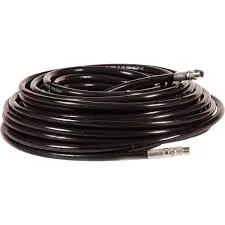power steering hose leak repair
Power Steering Hose Leak Repair A Comprehensive Guide
Power steering is an essential component of modern vehicles, providing drivers with the ability to steer effortlessly, especially at lower speeds. However, like any mechanical system, it can encounter issues over time, with one of the most common problems being a leak in the power steering hose. Addressing this issue promptly is crucial to ensure the longevity of your vehicle's steering system and maintain your driving safety.
Understanding Power Steering Hoses
Power steering hoses are responsible for transporting hydraulic fluid from the pump to the steering gear. There are typically two types of hoses involved the pressure hose, which carries fluid from the pump under high pressure, and the return hose, which brings it back to the reservoir at lower pressure. A leak in either of these hoses can lead to a decrease in steering performance and, if left unaddressed, can cause more significant damage to the power steering system.
Signs of a Leak
Identifying a leak in your power steering hose can prevent further issues. Common symptoms include
1. Fluid Spots If you notice fluid spots under your vehicle, especially near the front end, it could indicate a power steering fluid leak. 2. Whining Noise A whining or groaning noise while steering is often a sign that the fluid level is low, usually due to a leak. 3. Tight Steering If you feel an unusual tightness in the steering wheel, it may indicate inadequate fluid pressure caused by leakage.
4. Warning Light Some vehicles have a warning light indicating low power steering fluid levels.
Tools Required for Repair
Before starting the repair process, gather the necessary tools and materials
power steering hose leak repair

- Replacement power steering hoses - Hydraulic steering fluid - Wrenches and pliers - Hose clamps (if needed) - A drain pan to catch any fluid spills - Safety goggles and gloves
Step-by-Step Repair Process
1. Safety First Ensure that your vehicle is parked on a flat surface and the engine is off. Always wear safety goggles and gloves when handling automotive fluids.
2. Locate the Leak Inspect both the pressure and return hoses for visible signs of wear, cracks, or holes. You may need to wipe the hoses clean to spot the leak more easily.
3. Remove the Damaged Hose Use the appropriate wrench to loosen the fittings on both ends of the damaged hose. Have a drain pan ready to collect any residual fluid. Once loosened, remove the hose carefully.
4. Install the New Hose Take your replacement hose and ensure it matches the specifications of the original. Attach one end of the new hose to the pump and the other end to the steering gear, ensuring a secure fit. Tighten the fittings but avoid over-torquing.
5. Refill Power Steering Fluid After replacing the hose, refill the power steering fluid reservoir with the recommended type of fluid. It’s essential to check your owner’s manual for the correct specifications.
6. Test Your Repair Start the engine and turn the steering wheel from side to side to circulate the fluid. Check for leaks around the new hose. If everything is secure, take your vehicle for a short test drive.
Conclusion
Repairing a power steering hose leak can save you from more extensive and costly repairs down the line. By recognizing the signs of a leak and following these steps, you can ensure your vehicle remains safe and reliable. If you are uncertain about any part of the process, consulting with a professional mechanic is always a wise choice. Keeping your power steering system in top condition is crucial for your vehicle's performance and your safety on the road.
-
Ultimate Spiral Protection for Hoses & CablesNewsJun.26,2025
-
The Ultimate Quick-Connect Solutions for Every NeedNewsJun.26,2025
-
SAE J1401 Brake Hose: Reliable Choice for Safe BrakingNewsJun.26,2025
-
Reliable J2064 A/C Hoses for Real-World Cooling NeedsNewsJun.26,2025
-
Heavy-Duty Sewer Jetting Hoses Built to LastNewsJun.26,2025
-
Fix Power Steering Tube Leaks Fast – Durable & Affordable SolutionNewsJun.26,2025

